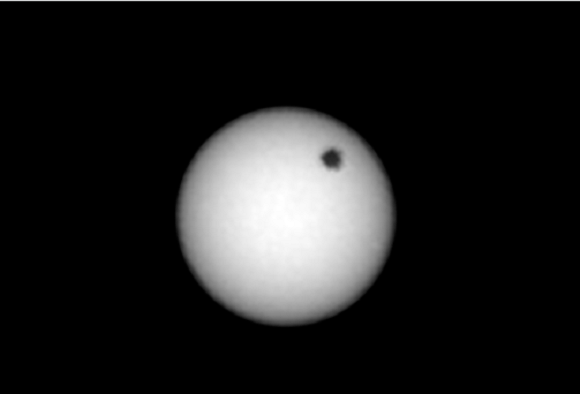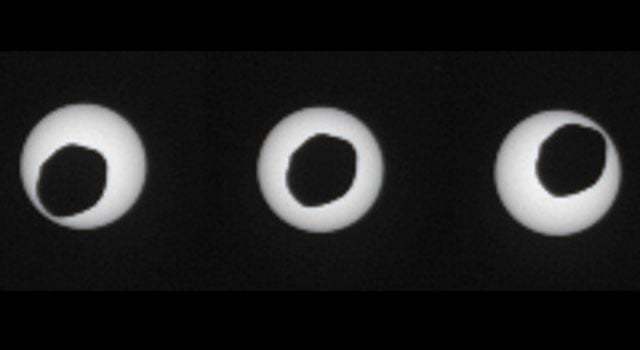Ever since the Curiosity rover landed on Mars in 2012, it has provided NASA scientists with invaluable data about the planet's past, as well as some breathtaking images of the planet's surface. Much like its predecessors, the Spirit and Opportunity rover, many of these images have shown what it is like to look up at the sky from the surface of Mars and witness celestial events.
Of these events, one of the most intriguing has to be the many Martian solar eclipses that have taken place since the rover's landed. Last month, the Curiosity rover witnessed two eclipses as the moons of Phobos and Deimos both passed in front of the Sun. These latest eclipses will allow scientists to fine-tune their predictions about Mars' satellites and how they orbit the Red Planet.
The images were captured by Curiosity's Mast Camera (Mastcam), which has special solar filters that allow it to stare directly at the Sun. The first event, where Deimos was photographed as it passed in front of the Sun, took place on March 17th - or the 2350th Martian day of Curiosity's mission (Sol 2350). This was followed by Phobos being photographed as it passed in front of the Sun on March 26th (Sol 2359).
In both cases, owing to their smaller size, these events did not result in an full eclipse of the Sun. Deimos, the smaller of the two moons, measures only 16 km (10 mi) across and orbits Mars farther than its counterpart - at an average distance of about 23,463 km (14,690 mi). Meanwhile, Deimos measures 26 km (16 mi) across and orbits Mars at an average distance of 9,376 km (5826 mi) - but it is also too small to obscure the Sun.
As a result, the passage of Phobos in front of the Sun was technically a transit while Deimos' was more properly classified as an annular eclipse. In addition, one of Curiosity's Navigation Cameras (Navcams) observed Phobos' shadow on March 25th (Sol 2358) at sunset, which caused the ground around the rover to temporarily darken.
The way Mars rovers have been able to witness solar eclipses has allowed scientists to learn a great deal about the Martian satellites. Before the Spirit and Opportunity rovers landed in 2004, there was a lot more uncertainty about the orbit of each moon. In fact, the first time one of the rovers tried to capture Deimos eclipsing the Sun, the moon was 40 km (25 mi) away from where they expected it to be.
By being able to witness more of these events, it not only allows to learn more about Mars and its moons' orbital dynamics, it also makes Mars more relatable. As Mark Lemmon, an associate professor of atmospheric sciences from Texas A&M University and a co-investigator with Curiosity's Mastcam, explained in a recent NASA press release:
In total, the Spirit, Opportunity and Curiosity rovers have collectively witnessed 8 eclipses involving Deimos and 40 involving Phobos. While there is still a margin of uncertainty in the orbits of both moons, it is getting smaller with every eclipse that's viewed from the Martian surface.
With more robotic missions planned for the surface, such as the *Mars 2020* rover mission and an eventual crewed mission, there may come a day when astronomers are able to predict the orbits of Mars' moons with the same precision as they do our Moon.
*Further Reading: NASA*
 Universe Today
Universe Today


